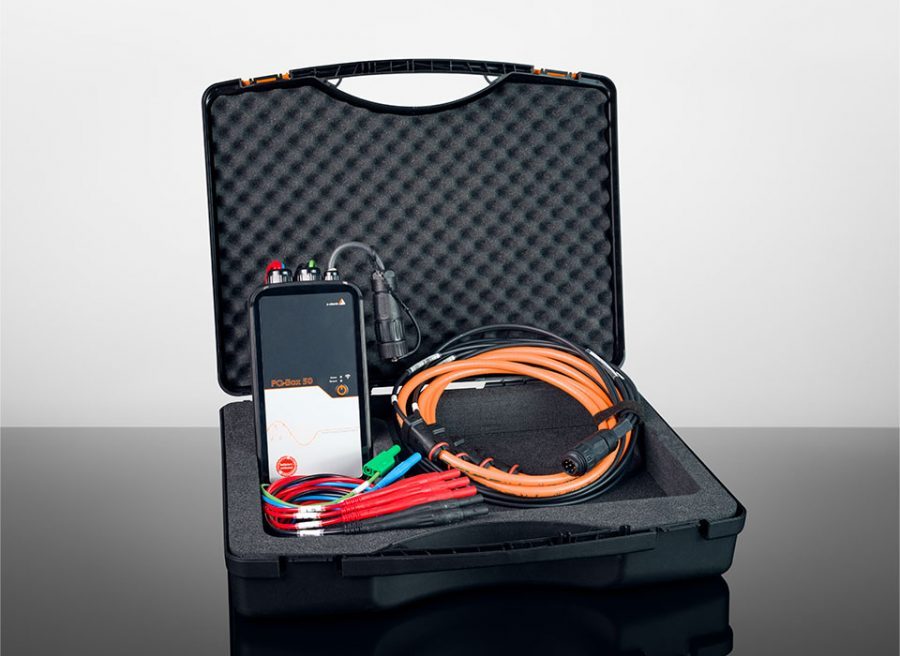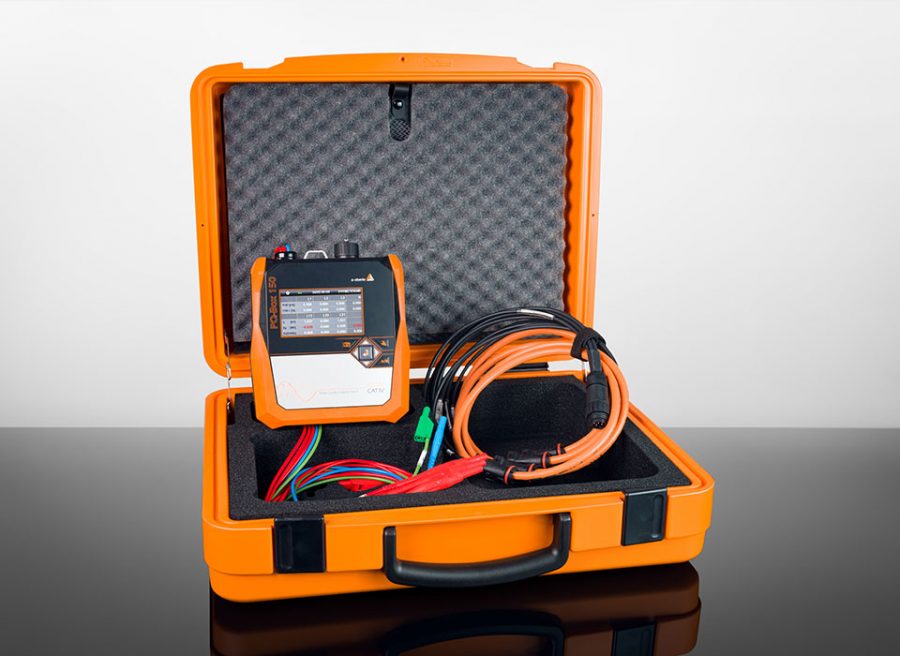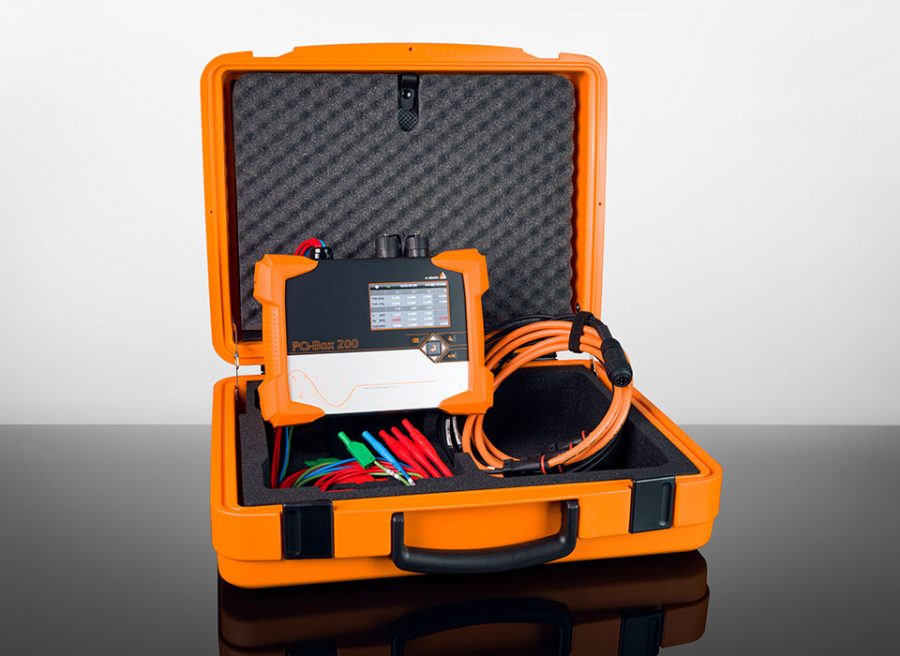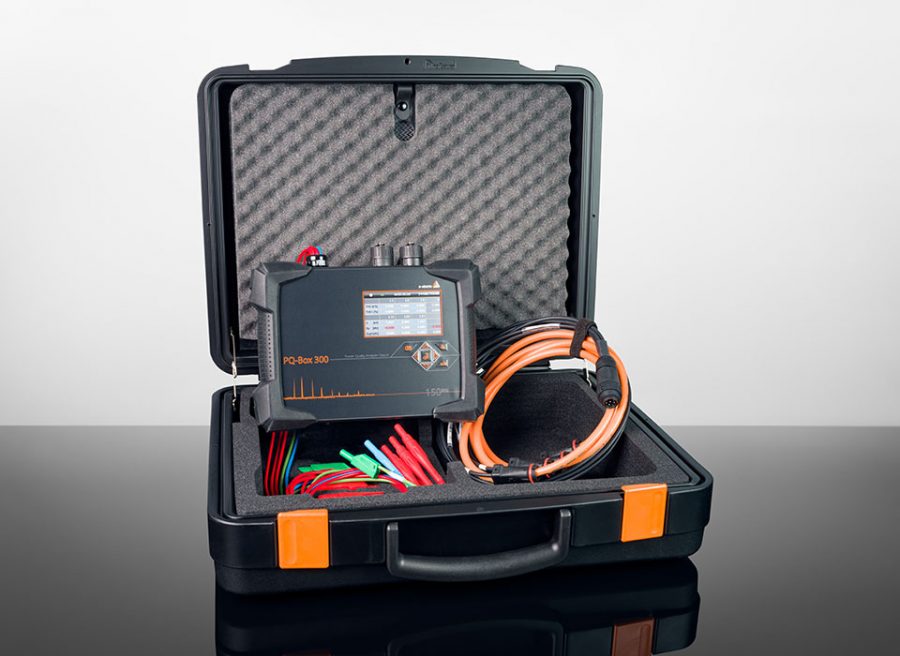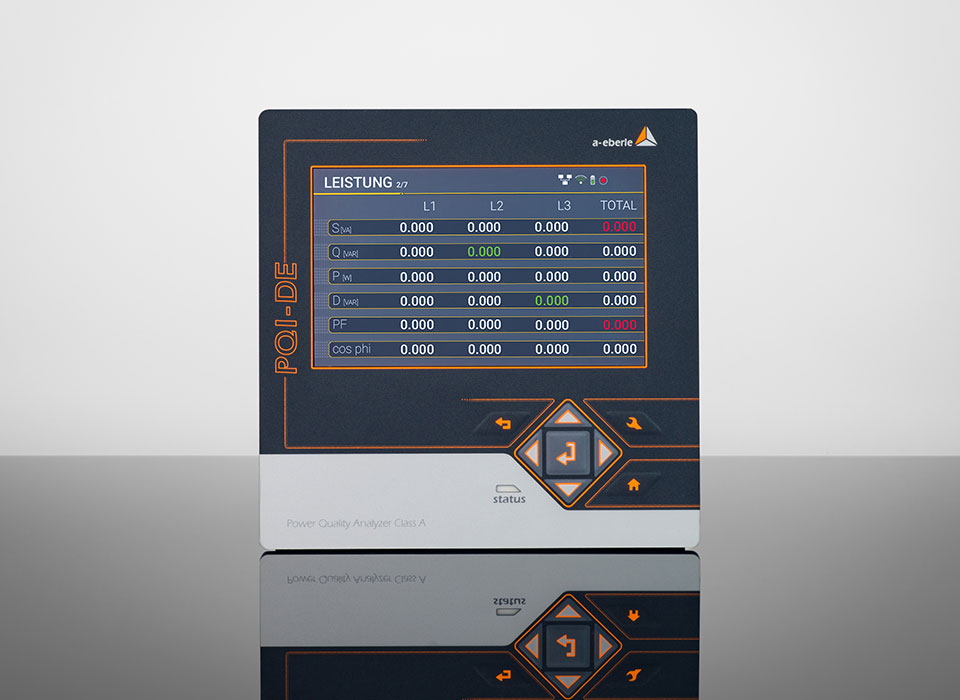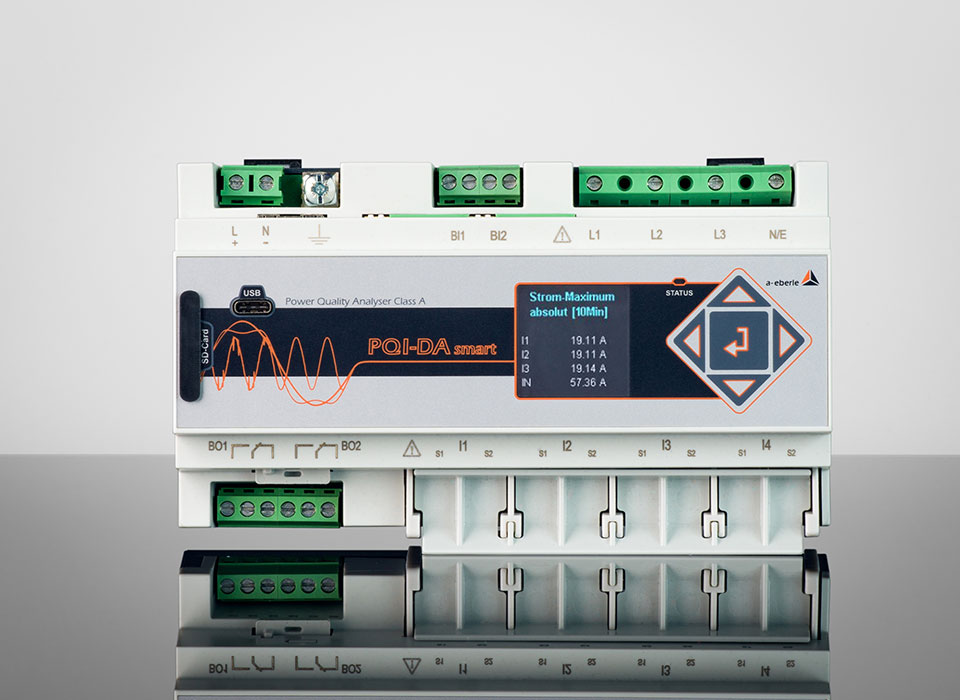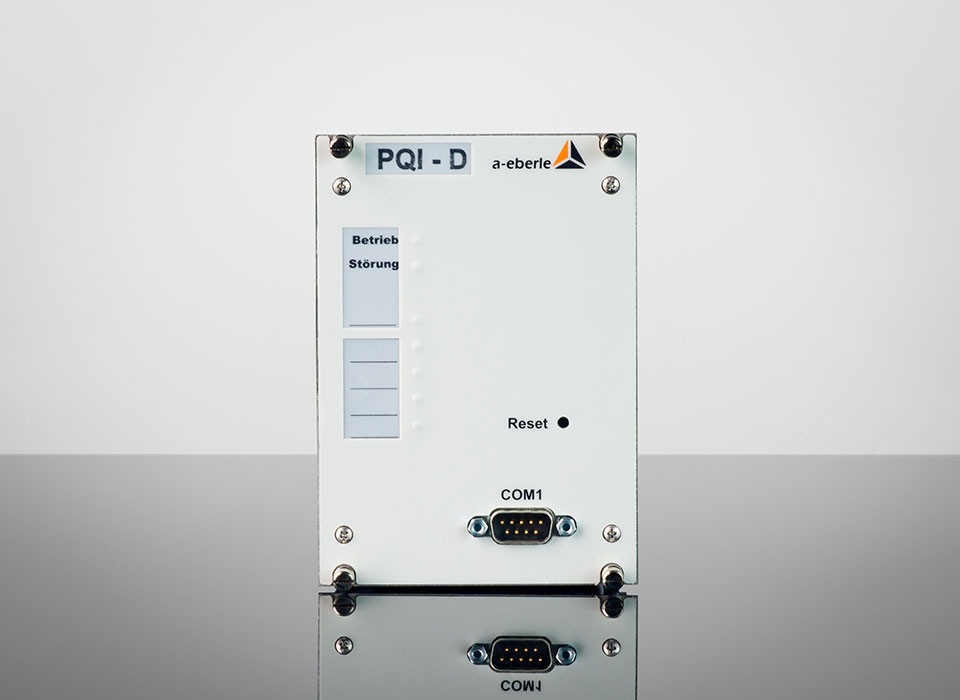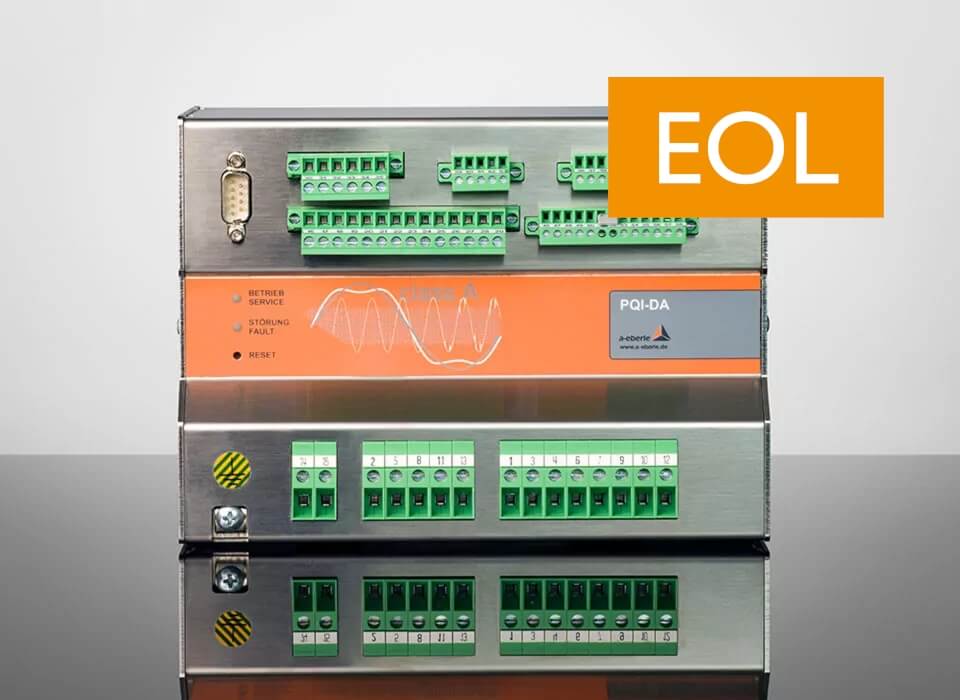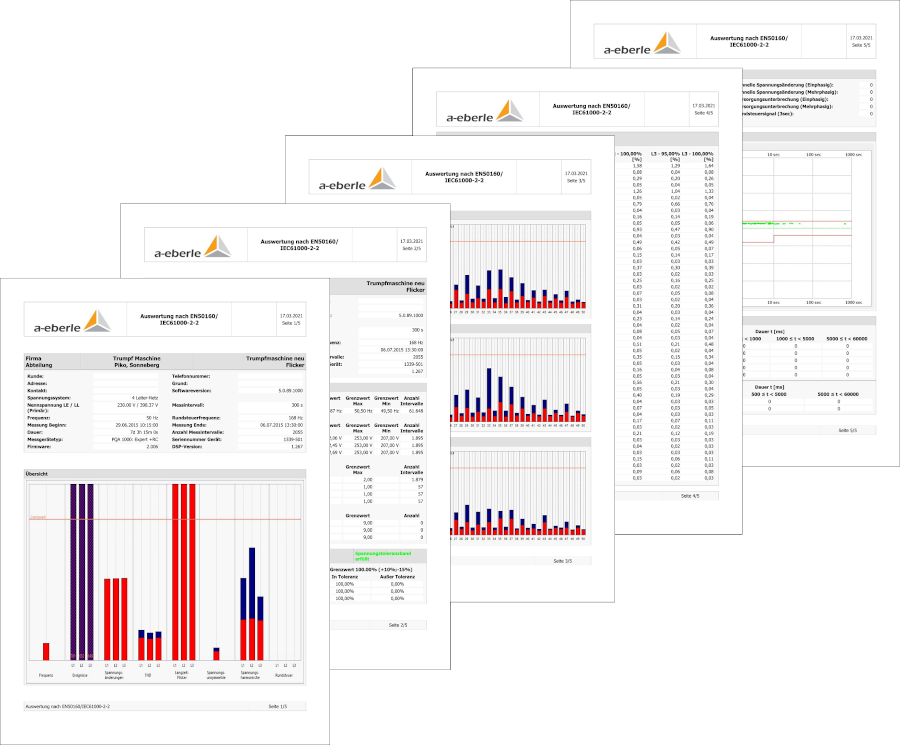
Power Quality analysis according to EN 50160 and IEC 61000-2-2, -2-4, -2-12
We support you with our expertise and our well-equipped device lending pool including all necessary measurement accessories. After the power quality analysis service, we will help you develop a solution based on the measurement data and evaluation.
Have more questions or start an enquiry? Just click on “Service Enquiry”.
FAQ on Power Quality analysis
What is a grid analysis?
Grid analysis (also network analysis, power network analysis or mains analysis) as an umbrella term refers to a specialised process that aims to examine the structure, performance and reliability of power supply grids. These analyses are carried out to ensure the optimal distribution of energy, identify bottlenecks, improve the efficiency of energy transmission and ensure the stability of the grid under different load conditions. Grid analyses in this context typically include the evaluation of network/grid topologies, the simulation of load flow, the analysis of short-circuit currents, the investigation of voltage stability and the evaluation of grid response to renewable energy sources.
In the context of energy supply and grid operation, grid analyses are also more specifically understood to mean the measurement and analysis of energy networks (public or commercial/industrial) using suitable measurement technology to determine voltage quality/power quality in order to ensure the security of supply of electrical transmission and distribution grids.
When/why is a grid analysis necessary?
A grid analysis is essential for several reasons and should be carried out regularly to ensure the integrity, safety and efficiency of power grids. Without regular grid analyses, you run significant risks, including the possibility of grid instability, inefficient power distribution, power surges and ultimately service interruptions or damage to connected devices and equipment. These risks can lead to significant financial losses, loss of production and even jeopardise the safety of people.
Carrying out grid analyses is particularly necessary for the following reasons:
- Ensuring and verifying the defined grid compatibility:
Grid analyses are a prerequisite for ensuring the conformity of the grid quality with binding national and international standards such as EN 50160 (LV to HV) and IEC61000-2-4 Class 1;2;3. They enable deviations to be identified, verified and corrected before they can lead to problems. All power quality measuring devices from A. Eberle fulfil the IEC 61000- 4 – 30 Class A Ed. 3 standard 100% and are therefore approved as Class A measuring devices for the verification of grid compatibility parameters. - Determination of influencing variables:
They are used to determine influencing variables from the grid that are relevant for the design of compensation and filter circuit systems. This information is crucial for developing effective solutions for improving grid quality. - Commissioning support and verification management:
Grid analyses provide support during commissioning of systems and enable proof of the effectiveness of installed measures to improve grid quality. - Power quality monitoring:
After the installation of compensation and filter circuit systems, continuous monitoring of the voltage quality is required, especially in systems with powerful harmonic and flicker generators.
Failure to recognise and rectify problems in the power supply can lead to a shortened service life of equipment, faults and malfunctions. High-quality power quality analysers make such faults visible and enable problems to be rectified quickly and effectively.
The question of the ideal frequency for power quality analyses depends on various factors, including the complexity and load of the grid as well as the power quality requirements. Generally, an annual review is a good starting point, but in high-risk environments or when introducing new, performance-intensive loads, a more frequent cycle may be required. The key is to choose a frequency that ensures continuous and reliable monitoring of the power quality while being flexible enough to respond to changes in the grid.
What are the requirements for a grid analysis?
In order to carry out an effective grid analysis, certain prerequisites and conditions must be met at the customer’s site. These prerequisites are crucial in order to be able to carry out the measurement safely, precisely and in accordance with the applicable standards and guidelines. The following points should be emphasised in particular:
- Accessibility of the measuring point:
A fundamental prerequisite for carrying out grid analyses is that the measuring point is easily accessible. This makes it easy to install and maintain measuring devices and carry out analyses without unnecessary delays or complications. The mobile grid analysers of the PQ-Box family from A. Eberle make full use of the advantages of their very compact and robust design, especially at measuring points that are difficult to access. - Technical suitability of the measuring point:
The measuring point must be technically suitable for the installation of a measuring device. This means that the existing infrastructure (e.g. electrical connections and protective devices) must meet the technical requirements of the measuring device in order to ensure accurate and reliable measurement data. By using additional current clamps from the extensive accessories catalogue, A. Eberle Messtechnik can be connected easily and efficiently. - Technical contact person on site:
The availability of a technical contact person on site is essential in order to be able to clarify any questions that arise during the performance of the grid analysis and to ensure that the analysis is carried out in accordance with the project-specific requirements. - Compliance with accident prevention regulations:
Compliance with accident prevention regulations must be ensured. This includes providing a safe working environment for the personnel carrying out the grid analysis and includes measures to protect against electric shock, falls and other potential hazards. - Protection of the measuring point against unauthorised access:
The measurement point must be protected from unauthorised access to ensure the integrity of the measurement data and to ensure that measurement devices are not damaged or tampered with.
There are also circumstances that may preclude or at least significantly complicate power grid analysis. These include, for example, extremely unsafe or hazardous environments where the risk to personnel or measurement equipment cannot be adequately controlled, or situations where the technical requirements for accurate measurement cannot be met. In such cases, alternative solutions or preparatory measures must be considered to enable successful grid analysis.
How does a grid analysis work?
A grid analysis is essential for several reasons and should be carried out regularly to ensure the integrity, safety and efficiency of power grids. Without regular grid analyses, you run significant risks, including the possibility of grid instability, inefficient power distribution, power surges and ultimately service interruptions or damage to connected devices and equipment. These risks can lead to significant financial losses, loss of production and even jeopardise the safety of people.
Carrying out a grid analysis is a structured process that can be divided into several phases in order to effectively assess and improve the quality and safety of the electrical grid. As part of our range of services, our project assignments basically consist of the following four subsequent steps. From the project definition to the final report:
1. Project clarification
- Problem definition with objectives
- Site inspection
- Measurement concept
- Offer preparation
2. Measurement campaign
- Inserting the measuring devices
- under voltage (AuS)
- Documentation of the
- electrical environment
- Fault tracking
3. Evaluation
- Evaluation of the measurement data
- Measurement report with solution
- Presentation and discussion
4. Service
- Realisation of the solution measure
- Verification measurement
- Final report
Would you like support in analysing your power grid? We support you with our many years of experience and expertise
Regardless of whether you want a full service, are a user of our measuring devices yourself and want extended support or are a PQ service provider yourself and need additional resources at short notice.
As a globally renowned manufacturer of mobile high-end grid analysers and the leading provider of fixed installed power quality measuring devices in Germany, we have technical expertise, many years of experience and advanced measuring technology. We are at your side as a reliable and competent partner for all challenges in the field of grid analysis. From the project definition to the final report.
Interested in our Power Quality services? Click above to learn more!
More generally defined – if you are perhaps already an experienced user of our mobile power quality analysers »PQ boxes« – you will probably be guided by the following schedule when carrying out a measurement in the grid:
- Preparation and planning:
This first step involves selecting the measurement points based on the objectives of the grid analysis, determining the required measurement period and ensuring that all requirements for the measurement are met. This includes checking the accessibility of the measuring points, their technical suitability and the provision of a technical contact person on site. - Installation of the measuring devices:
After preparation, the measuring devices are installed at the previously determined measuring points. Particular emphasis is placed on the correct installation and configuration of the devices in order to record accurate and meaningful data. Compliance with accident prevention regulations is of the utmost importance in this phase. - Data collection:
During the specified measurement period, the installed devices continuously collect data on the quality of the electrical energy. This data includes information on voltage, current, frequency, harmonics and other relevant power quality parameters. - Analysis and evaluation:
Once data collection is complete, the collected data is analysed to identify potential problems and anomalies in the grid. This analysis helps to understand the causes of power quality problems and to develop suitable solutions. - Report and Recommendations:
In the final step, a detailed report is produced summarising the results of the grid analysis. This report contains an assessment of the current power and energy quality, identifies any problems found and proposes measures to improve the power quality. The report serves as a basis for the implementation of optimisation measures.
Which parameters are recorded during a grid analysis?
During a grid analysis, numerous measured values and parameters are recorded to enable a comprehensive assessment of the power supply quality and grid performance. Below you will find a list of the grid parameters that you can determine and evaluate with the mobile grid analysers of the PQ-Box family from A. Eberle:
These parameters enable an in-depth analysis & verifiable recording of the power supply quality (class A measuring devices) and help to identify and rectify grid problems, e.g. by using suitable filter technology to optimise the reliability and efficiency of the electricity grid.
Grid analysis according to DIN EN 50160
DIN EN 50160 is a European standard that describes the voltage characteristics in public electricity supply networks. It specifies the quality requirements for the power supply, in particular with regard to voltage quality, and is regarded as the authoritative standard for the assessment of grid quality. When carrying out a grid analysis in accordance with DIN EN 50160, special attention must be paid to specific aspects in order to ensure that the electricity supply is within the quality parameters defined by this standard. Our mobile grid analysers have an additional option for automatic standard evaluation and energy recording at the touch of a button for the following standards:
- EN50160 (2016)
- IEC 61000-2-2 (2018)
- IEC 61000-2-12/IEC 61000-2-4 (Class 1; 2; 3)
- NRS048 /IEEE 519/VDE AR-4105
What needs to be paid particular attention to?
- Voltage level and voltage fluctuations:
The standard defines permissible values for the voltage level and its fluctuations over time. It must be checked whether the supply voltage is within the specified tolerances. - Frequency fluctuations:
The frequency of the electrical energy must also be within certain limits, as deviations can affect the performance and operation of electrical devices. - Harmonic distortions and harmonics:
DIN EN 50160 specifies limit values for the extent of permissible harmonics and total harmonic distortion (THD). These must be identified and assessed. - Flicker and transients:
Short-term voltage fluctuations and transient overvoltages or undervoltages, which can lead to light flickering or other disturbances, are also addressed by the standard. - Interruptions and voltage dips:
The standard specifies how to deal with power supply interruptions and voltage dips, including their duration and frequency.
Scope of the standard
DIN EN 50160 is used in public electricity supply grids and serves as a reference for grid analyses that evaluate the quality of the electricity supply. It is used by energy supply companies, grid operators, industrial companies and in the planning and operation of systems and devices connected to the public grid. The standard helps to ensure a uniform quality standard for the power supply, which is particularly important for manufacturers and operators of sensitive electronic devices, as these often have specific requirements for the quality of the supply voltage.
Compliance with DIN EN 50160 is therefore essential to ensure the reliability and safety of the power supply and the smooth operation of connected systems and devices. It serves as the basis for carrying out grid analyses aimed at assessing and improving the quality of electrical energy in supply networks.
Devices for grid analysis
When conducting a grid analysis, choosing the right grid analyser is critical to gaining accurate and comprehensive insights into the quality and performance of the power grid. Grid analysers, also known as grid analysis meters, are specialised instruments that can measure a variety of parameters such as voltage, current, power, frequency, harmonics and transients. These devices are available in both mobile and stationary versions to meet different application requirements.
Important aspects when differentiating between grid analysers:
- Measuring accuracy and sampling rate:
High measurement accuracy and a sufficient sampling rate are crucial in order to be able to detect even fast and short disturbances in the grid. - Detection range of parameters:
Good power system analysers should be able to measure a wide range of parameters, including voltage, current, power, frequency, harmonics, flicker and transients. - Mobility and flexibility of use:
Handy, mobile devices are particularly suitable for service calls or temporary measurements at different locations. Stationary devices are intended for permanent installations and continuous monitoring tasks. - Data storage and transmission:
An integrated logger function for data storage and the ability to transfer data to PCs or via networks are essential for carrying out long-term analyses and saving data for later evaluation. - User-friendliness and software support:
Intuitive operation and powerful, user-friendly software for data evaluation facilitate handling and analysis.
Different versions of measuring devices for analysing the grid:
Mobile power grid analysers: The mobile power grid analysers from A. Eberle are extremely robust, powerful & user-friendly portable power quality analysis measuring devices, frequency analysers, power meters and transient recorders all in one. These power analysers have been developed with a particular focus on simple and intuitive operation. This makes them ideal for field technicians and for general diagnostics at various measuring points when measuring deep in the grid. The »PQ-Box family« has an autonomous power supply and a large display (from »PQ-Box 150«). The extensive catalogue of accessories consists of components such as current clamps and Rogowski coils, which enable the measured values to be recorded without direct intervention in the cabling and make the measurement experience convenient and efficient.
Permanently installed / stationary power quality analysers: Designed for permanent installation in switchgear or on top-hat rails, these devices offer continuous monitoring of the power quality and are often designed for connection to central control systems. The permanently installed fault recorders and power quality network analysers »PQI-DA smart«, »PQI-DE« and »PQI-D« are the central components in a system that can be used to solve all measurement tasks in a low, medium and high-voltage grid. The analysers can be used as fault recorders with a sampling rate of up to 41 kHz, as power quality measuring devices in accordance with EN50160 / IEC 61000-2-2/4 or as power analysers.
Measurement technology for grid analysis by A. Eberle:
A. Eberle GmbH & Co. KG is active in the field of measurement and control technology for the energy sector and medium-sized and large industrial companies. Our products and services secure and improve the availability of energy supply and help to integrate renewable energy sources into the grids.
We not only offer you power quality services, but are also an internationally active and renowned manufacturer of solutions in the following fields:
⚡ »REGSys®« – automatic voltage regulation for transformers with tap-changer
⚡ »LVRSys®« – low-voltage regulation as an economical & efficient alternative to line expansion
⚡ »PQSys« – fixed installed power quality-analysers with fault recorder function
⚡ »PQMobil« – mobile power quality-analysers & data logger
⚡ »EORSys« – short-circuit and earth fault detection
⚡ »EORSys« – earth fault compensation & current injection
⚡ SCADA: secure communication
Our customers are:
- TSOs (transmission system operators)
- DSOs (distribution system operators)
- Energy supply companies that are active at all voltage levels
- Large and medium-sized industrial companies from all sectors of the economy that have their own power supply
Discover the causes of grid problems quickly and in a targeted way
With our innovative products and methods, we are able to identify and locate the causes of faults in the energy grid quickly and easily. Whether in low, medium or high-voltage grids – we will find what is wrong. Quality of supply is playing an ever greater role today, now that the energy transition is under way. Accordingly, it is not only important to eliminate faults as quickly as possible, but also to work preventively against potentially costly damages and production breakdowns.
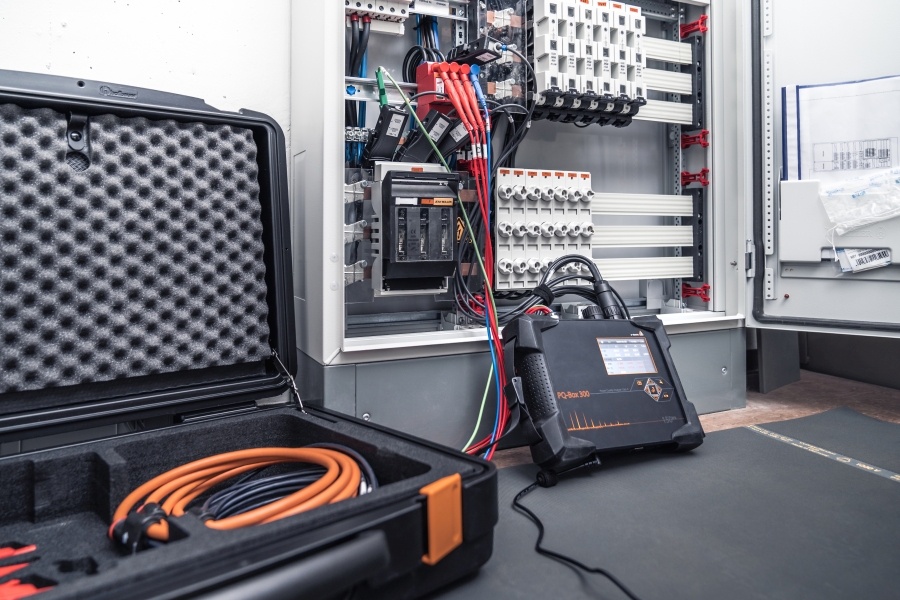
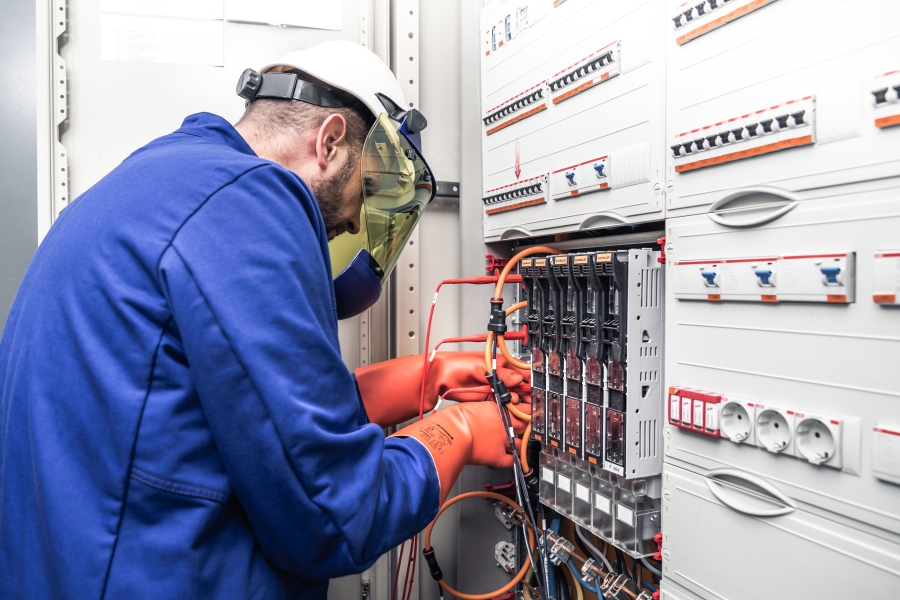
Our experts’ extensive experience in the sector
Our specialised team of experts has over 25 years of experience in the sector. During this time, they have built up a wealth of experience. In keeping with this, our experts have been certified as “Power Quality Experts” (VDE). This means they know the forces in play and how to overcome the difficulties our customers are in. Training is a top priority with us. Our experts not only build on their own know-how, but also cooperate on research projects with universities, generating new knowledge.
Use of our high-grade Power Quality Analyzers
Even the greatest expert cannot achieve the desired result without the right tools. Consequently, as a market leader for mobile power quality devices, we work exclusively with modern, innovative analyzers that are equipped for every application. Our devices are certified to Class A, the highest measurement standard. This means they are fully equipped to deliver the extensive, detailed measurement data needed for a well-founded analysis.
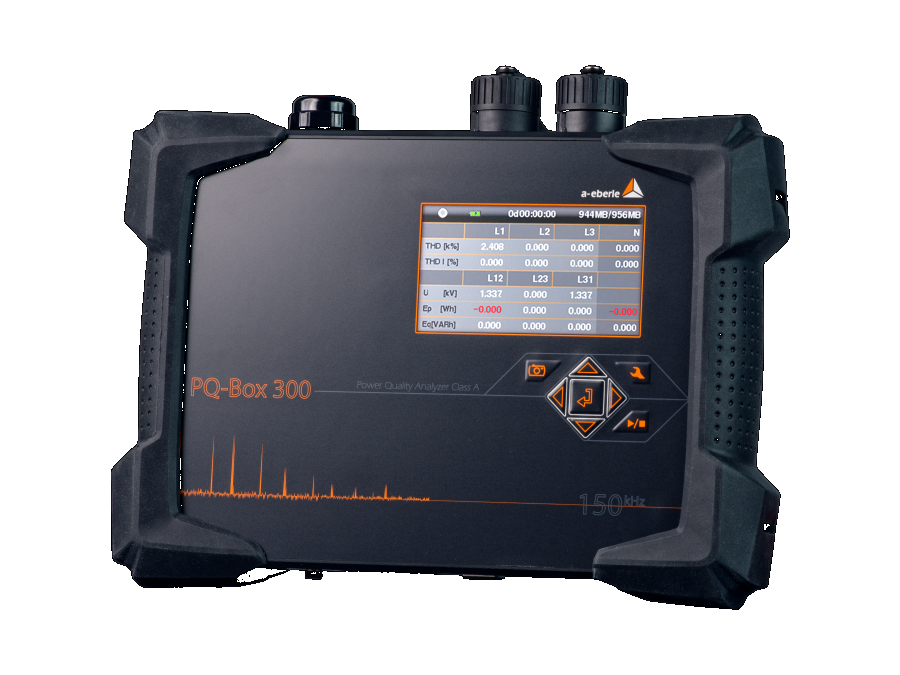
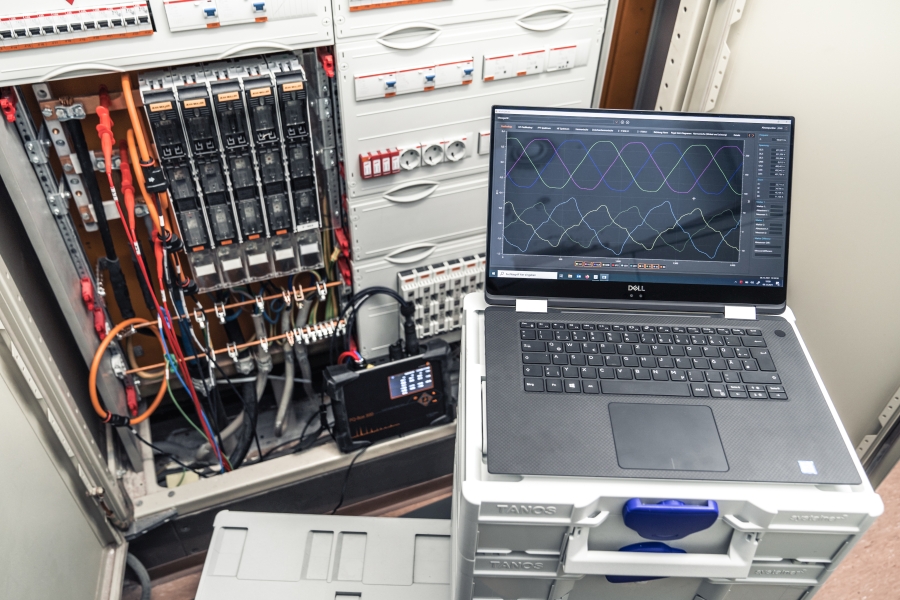
Problem-focused assessment for every application
In many fields of life, we are becoming ever more dependent on high-quality power supplies. That is why the following applies to our services: no matter whether in industrial environments or for energy suppliers – through the right combination of expert knowledge and measurement devices, we can create a solution to fit any problem. Our experts are also happy to take on the role of independent consultant for the implementation of such solutions.
References
Practical examples from customer projects
Customer: Waste-to-Energy Plant
Application
The waste delivered by the refuse trucks is dumped into a bunker. Two gantry cranes with refuse grabs mix the refuse and fill three kiln lines with it. Both cranes and their equipment were replaced.
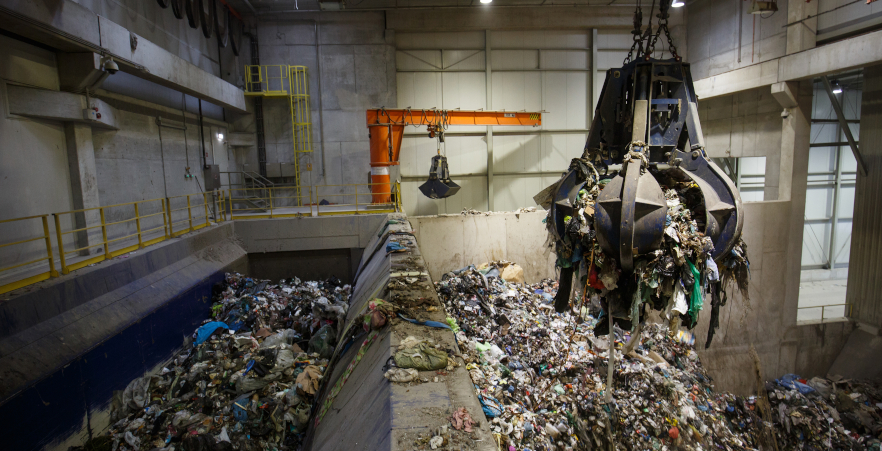
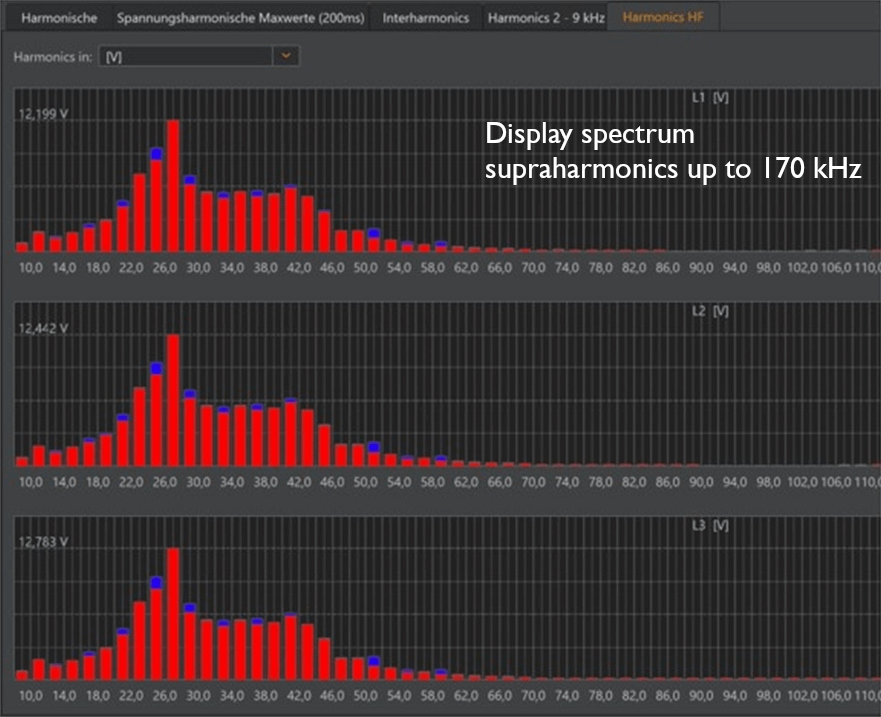
Challenge
Since then, there has been an increased failure of components in other parts of the plant that are connected to the same transformer. The feed of the main-distribution was monitored over a week with a PQ-Box 300.
- The power quality according to IEC 61000-2-4 (limits up to 9 kHz) could be complied with, but
- supraharmonics around 30 kHz were massively above the limit values of the IEC 61000-2-2 and
- the oscilloscope showed a big noise on the sinewave.
Solution
A further EMC analysis revealed glaring deficiencies in the shielding and earthing of the cables between the inverters in the machine cabinet and the motors on the crane systems. The crane manufacturer suggested using an isolating transformer to decouple the system from the rest of the low-voltage supply.
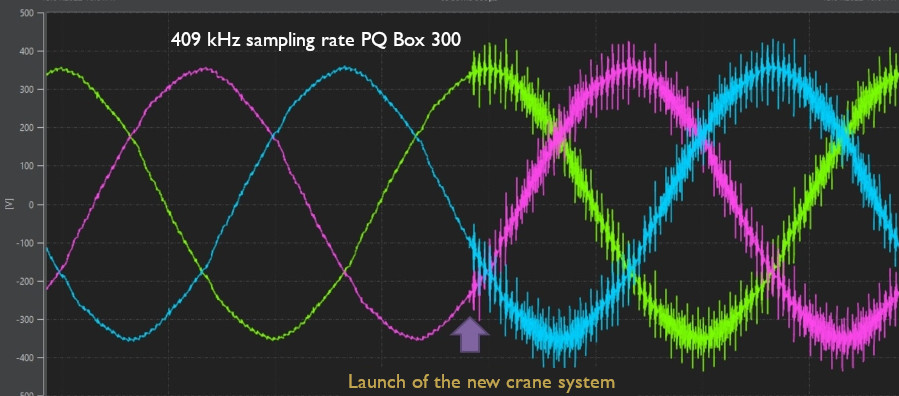
Customer: Printing Plate Manufacturer
Application
High-purity aluminum (99.9%) is required for the production of aluminum printing plates. This is supplied on rolls several kilometers long. The aluminum is electrochemically roughened and anodized and then coated with a light-sensitive layer. Finally, the printing plates are cut from the coil into pieces and packaged.
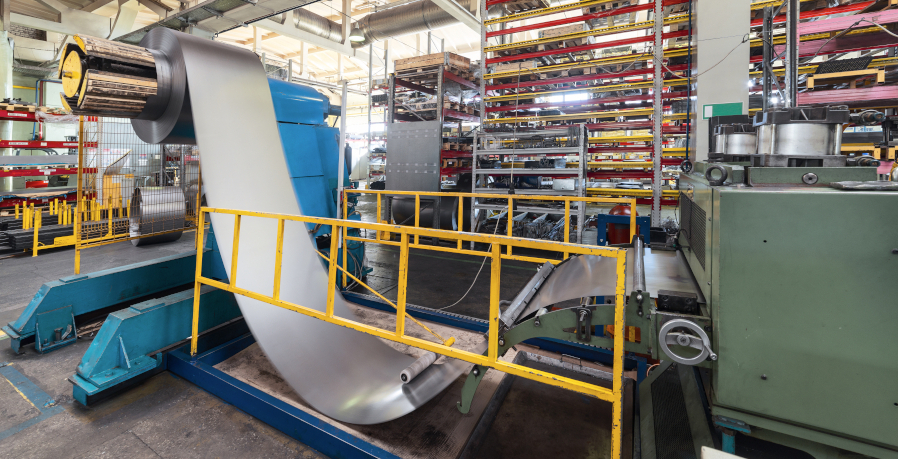
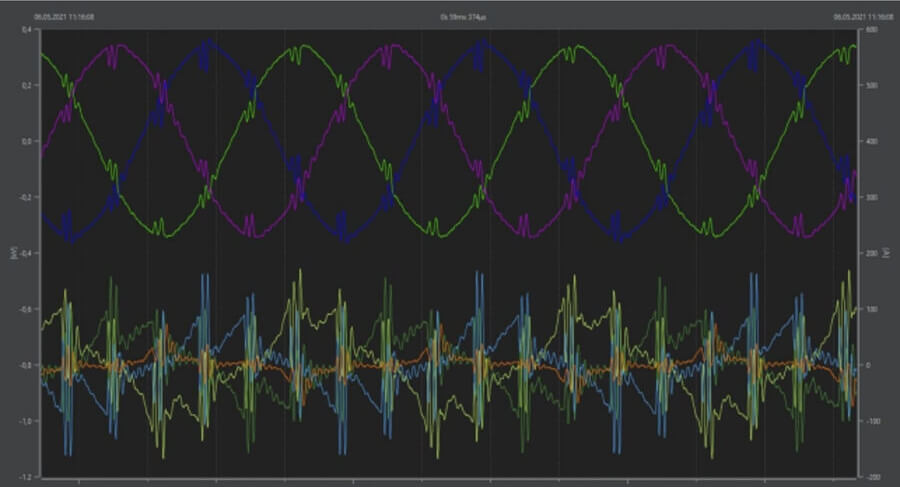
Challenge
In one machine segment, there were frequent failures of VFDs and power supply units. The feed of the sub-distribution was monitored over a week with a PQ-Box 300. The following observations were made:
- The power quality according to IEC 61000-2-4 could not be complied with,
- higher frequency harmonics were massively above their limit values,
- the oscilloscope showed marked commutation notches and
- commutation notches led to steep-flanked current characteristics, which damaged the loads over time.
Solution
The disturbance was related to the powerful thyristor-controlled rectifier, which was operated on the same transformer. To dampen the commutation dips, a line choke upstream of the rectifier in combination with a passive high-frequency filter was recommended.

